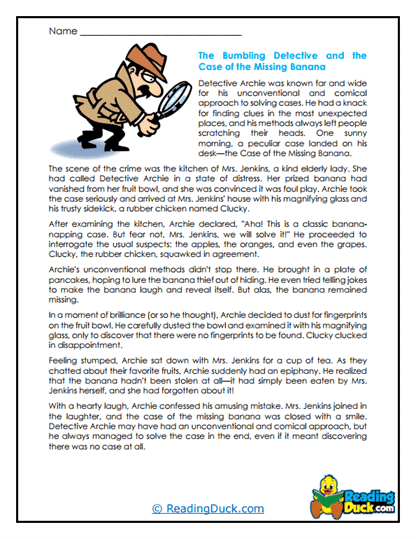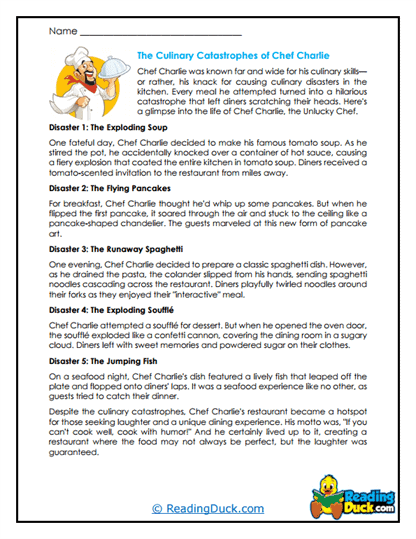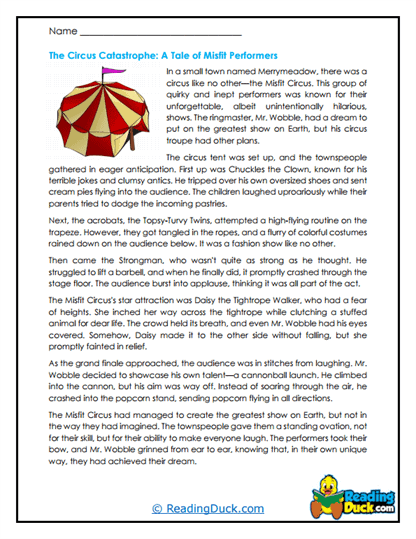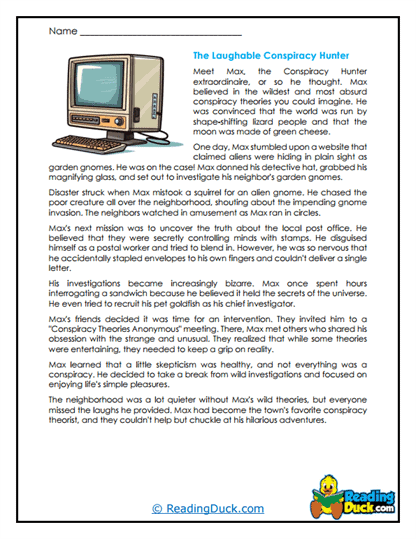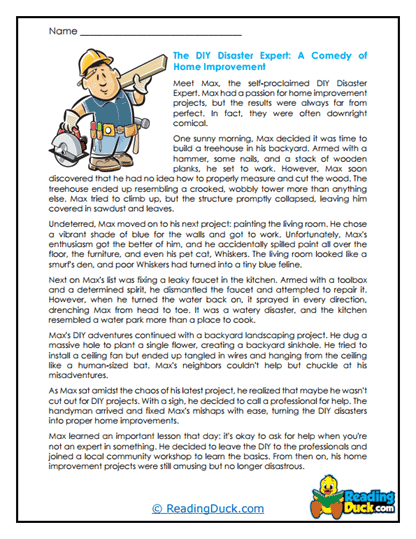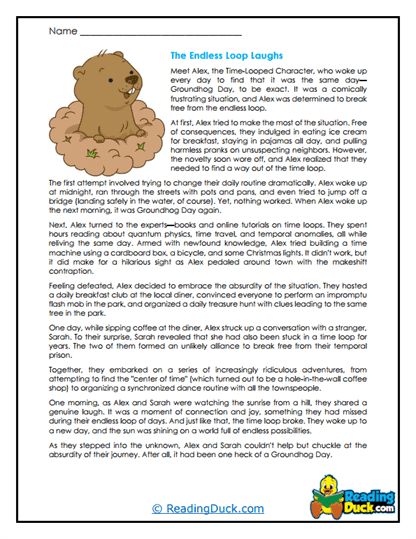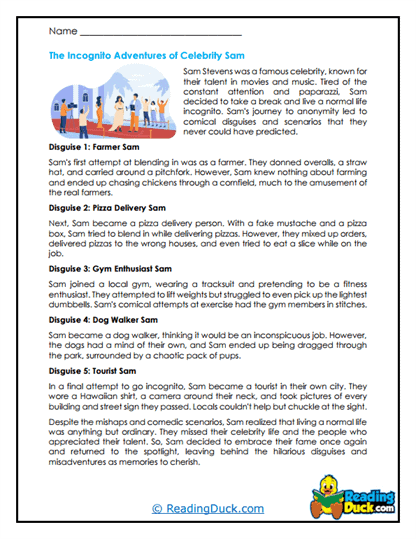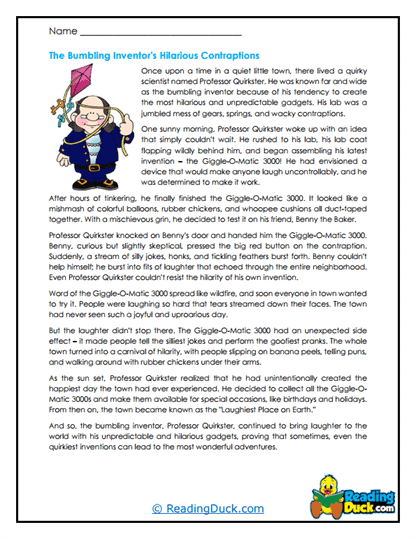Comedy Worksheets
About Our Comedy Worksheets
Our collection of Comedy Worksheets provides an engaging way for students to explore the complexities of the comedy genre within drama. Designed to enhance reading comprehension, critical thinking, and creative expression, these worksheets offer a variety of tasks that help students delve deeper into the essential elements of comedic storytelling. Each worksheet includes a carefully curated reading passage that follows the conventions of the comedy genre, followed by multiple choice, short answer, and open-ended response questions to assess understanding and inspire further analysis.
Available in PDF format, these worksheets are easily accessible, making it simple for teachers to download, view, and print for classroom use. Additionally, each worksheet comes with a downloadable answer key for quick and convenient reference, ensuring that educators can efficiently provide feedback and guidance.
Whether used as part of a lesson plan, group activity, or individual assessment, these worksheets encourage students to explore comedy's unique elements, from witty dialogue and comedic timing to humorous characters and situational irony. Perfect for both formative and summative assessments, our Comedy Worksheets inspire students to look beyond the surface of humor and develop a deeper appreciation for the art of comedy.
Understanding Comedy in Drama
The comedy genre within drama is characterized by its use of humor to entertain, offer commentary, and explore human nature. From lighthearted farces to satirical plays, comedy relies on clever dialogue, absurd situations, and well-timed jokes to keep audiences engaged and provoke laughter. However, beneath the surface, comedy often tackles serious themes, such as social issues, relationships, and human folly, making it a powerful tool for both entertainment and reflection.
Our Comedy Worksheets help students identify the core elements of comedic storytelling. The worksheets guide students through the process of analyzing character motivations, comedic timing, and the use of irony or exaggeration to generate humor. Students will also explore various comedic sub-genres, such as romantic comedy, satire, and parody, giving them a well-rounded understanding of how comedy can be used to evoke different types of laughter and emotional responses.
These worksheets foster a critical understanding of comedy by encouraging students to think about questions like:
- How do the characters’ actions lead to humorous situations?
- What role does irony play in the overall theme of the passage?
- How do the comedic elements reveal deeper truths about society or human nature?
By blending analytical questions with creative prompts, the worksheets create opportunities for students to reflect on both the lighthearted and profound aspects of comedic drama.
Encouraging Critical Thinking and Creative Expression
Our Comedy Worksheets are designed not only to test comprehension but also to inspire creative engagement with the material. Through a combination of multiple-choice questions that assess factual understanding and open-ended response questions that require deeper analysis, students will be challenged to think critically about the techniques used to create humor and their impact on the story.
For example, a multiple-choice question might ask students to identify which character's actions are central to a humorous misunderstanding, while an open-ended question could prompt students to explain how the playwright uses comedic timing to build tension before a punchline. Additionally, students may be asked to rewrite a comedic scene from a different character's perspective or to create an alternate ending that shifts the tone from humor to tragedy, helping them engage more creatively with the text.
Through this mix of factual comprehension and creative thinking, students gain a more nuanced understanding of comedy as a dramatic genre. The open-ended questions in particular allow for personal expression, enabling students to interpret the humor in their own way and even experiment with their comedic writing style.
Promoting Group Collaboration and Classroom Discussion
Drama, especially comedy, thrives on collaboration and interpretation, and our Comedy Worksheets are designed to foster these experiences in the classroom. Group discussions encouraged by the worksheets allow students to share their interpretations of the humor and challenge each other’s perspectives, creating an environment where creative ideas and critical thinking can flourish.
For example, after working through a passage, students might engage in a group debate about the effectiveness of a particular joke or explore how different characters contribute to the comedic structure. These discussions not only reinforce comprehension but also allow students to delve deeper into the themes and characters, sparking insightful conversations about the art of comedy.
Additionally, educators can encourage students to act out scenes from the worksheets in pairs or small groups, helping them to physically explore the timing, gestures, and expressions that bring humor to life. These activities foster a collaborative learning environment, where students can experiment with their delivery of jokes, build on each other’s ideas, and enhance their appreciation for the craft of comedic performance.
Creative Engagement Through Dramatic Activities
Our Comedy Worksheets don’t just stop at comprehension; they inspire active learning and creative engagement. By offering opportunities for students to engage with the material in imaginative ways, these worksheets encourage students to think beyond traditional text analysis and explore the content more dynamically.
For example, after reading a comedic passage, students might be asked to:
- Act out key scenes with a focus on comedic timing and delivery.
- Write alternate endings, imagining how the story would change if a critical comedic moment went differently.
- Create original comedic dialogue that could fit into the passage, exploring their own sense of humor and timing.
In addition, these worksheets serve as an excellent springboard for complementary projects. After working through a set of Comedy Worksheets, educators could ask students to write their own short comedic play or work in groups to stage a comedic performance. These projects not only deepen students’ understanding of the genre but also allow them to showcase their creativity and collaborative skills.
Integrating Worksheets into a Broader Drama Curriculum
The versatility of our Comedy Worksheets makes them an invaluable tool for educators, fitting seamlessly into units on drama, literature, or genre studies. These worksheets provide an excellent introduction to the characteristics of the comedy genre, helping students to understand how humor works within a dramatic context. Teachers can use them to supplement lessons on comedy in literature, as part of a unit on the various dramatic genres, or even as part of a final project where students analyze or create their own dramatic pieces.
Additionally, the worksheets are ideal for use in both individual assessments and group activities. Teachers can assign the worksheets as homework to assess comprehension or use them in class to spark discussions and collaborative projects. Whether used for formative assessments to gauge students' understanding as they learn or for summative assessments after a unit on drama, these worksheets offer a flexible tool for reinforcing key concepts and inspiring deeper engagement with comedic texts.
Conclusion
Our Comedy Worksheets provide an engaging and comprehensive way for students to explore the comedy genre in drama. By combining reading passages with multiple-choice, short answer, and open-ended questions, these worksheets encourage critical thinking, creative expression, and group collaboration. With their easy-to-use PDF format and downloadable answer keys, educators can seamlessly integrate them into any curriculum, ensuring that students develop a deep appreciation for the art and complexity of comedic storytelling. From classroom discussions to dramatic re-enactments, our Comedy Worksheets bring the joy and depth of comedy to life for students.

